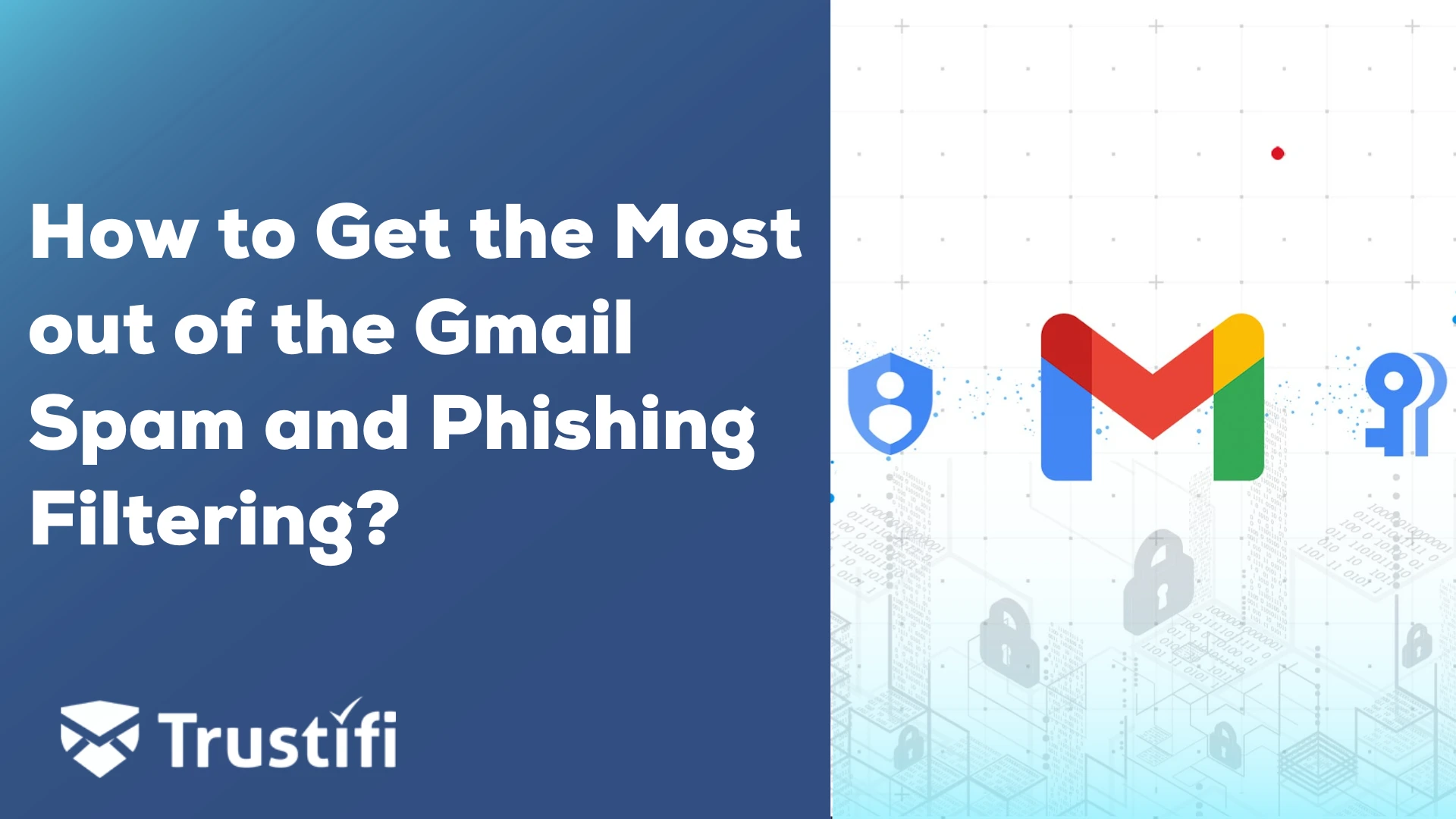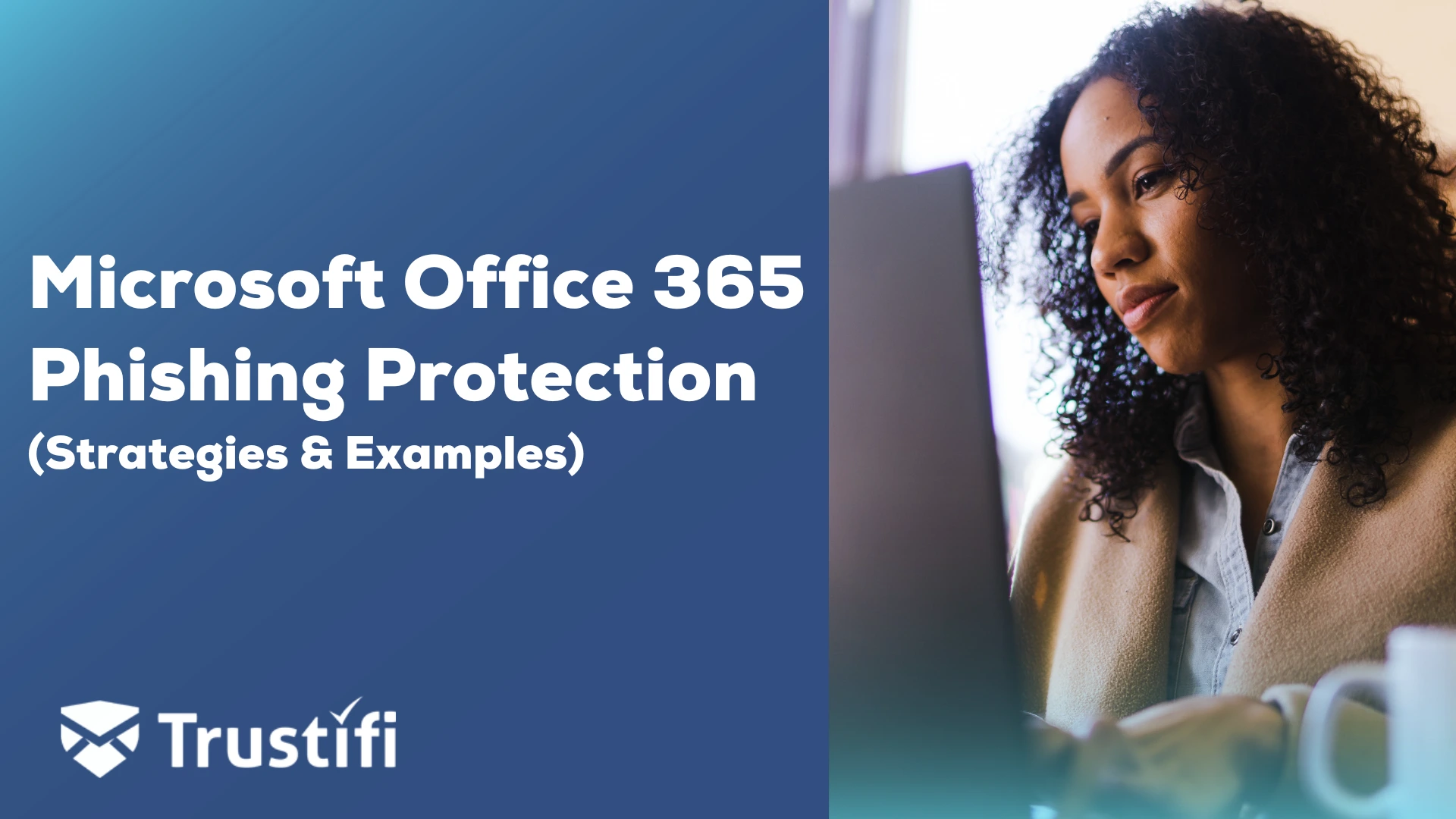Complex spam and AI-enabled next-generation phishing attacks continue to challenge Gmail users.
Organizations investing in next-generation cloud-based email security solutions from Trustifi to complement their existing Gmail spam filtering capabilities make it even more challenging for hackers to attack their users.
What is Gmail’s Phishing Filtering?
Gmail’s spam filter is highly effective and intelligent. Google uses machine learning (ML) to detect and separate spam emails into a separate folder. You can also manually mark emails as spam or not.
A Gmail phishing filter is like a car passing through a tunnel. The tunnel has several safety features, including requiring the vehicle to travel at a specific speed, stay in a particular lane, and not pass any cars. These rules help keep the vehicle safe, especially when the tunnel is congested during rush hour.
Gmail phishing filtering is very similar to the car analogy. Gmail scans every email delivered to Gmail.com through a series of email engines, looking for malware, malicious links, and junk mail. Google also scans to validate that the sending domain became authenticated using DMARC, DKIM, and SPF. These intelligent filters also scan the context of the messages, looking for spam messages, well-craft email phishing, and if bulk senders sent the messages.
Cloud-based email security providers like Trustifi and Google invest considerable capital in artificial intelligence (AI) and ML to help protect users from hackers using similar tools. These AI-powered tools help address a higher volume of spam, suspicious emails with malicious domain names, and alarming emails from temporary service providers.
How Does Gmail’s Phishing Filter Work Under the Hood?
Gmail uses machine learning (ML) and artificial intelligence (AI) capabilities. Google continuously learns from the vast number of emails Gmail processes daily. Google security teams consider various factors, such as the email’s source, domain name, and whether users have previously marked similar emails as spam.
The Gmail spam filter uses various factors, such as keywords and images, to analyze email messages and determine their likelihood of being spam. Subsequently, it decides on the action for each message, such as moving it to the “spam” folder or delivering it to the inbox.
From 2024 onwards, Google intends to implement stricter regulations regarding bulk email sending to mitigate the potential risks associated with spam and gmail phishing attacks. These regulations include compulsory email authentication and implementing a one-click unsubscribe function.
How to Customize Gmail Filters?

The Google spam filter is effective with little user interaction. However, users can customize the Gmail spam settings to meet their business needs.
This self-reporting spam and phishing capability is effective but needs to scale. Users wanting to extend filtering have other functions to reduce junk emails or unwanted messages.
Customizing Gmail filters is a widespread practice for many users. Some users will create filters from a specific email domain, sender, or if the email has attachments. Users have options within a particular email to report the message as spam or a possible phishing email.

Users can navigate to the “Filters” section of their Gmail page’s ” Settings” tab to create Gmail filters. Once there, they can click on “Create a new filter” and input the domain name in the “From:” field before clicking on “Create Filter.”
It’s helpful to train your Gmail spam filter to ensure proper categorization and location of emails. Suppose a significant email becomes mistakenly placed in the spam folder. In that case, you can easily undo this and adjust your Gmail spam filter settings to prevent any critical emails from being lost. This process is known as training your spam filter. To accomplish this, follow these steps:
1. Go to your spam folder. Click the More button
2. Open the email message you want to move from the spam folder to your inbox.
3. Click on the message “Report as not spam.”

How do you train Gmail Filters by sending feedback?
Gmail embeds a feature allowing users to help train the email filters by providing input and establishing their own filtering rules. Users leveraging the create filter function can search emails with keywords, subject lines, and domain names, apply tag labels, or move the message automatically to another folder.
1. Select the email message for which you wish to develop a filter. Under the menu pull-down, select “Filter messages like this.”

Within the various fields, including subject, the words, and to/from, add into specific keyword you want to train the email system filter> then select> “Create Filter.”

By placing this message into a new folder or flagging it as spam, phishing, or marked as read, you can help train Gmail filtering systems to handle future emails differently and with more automation.
What are Some Common Phishing Email Traps?
Hackers, cybercriminals, and scammers leverage various email phishing attack methods.
Be cautious of potentially fraudulent emails. In these emails, the sender poses as a reputable company or person and urges you to click on a linked URL that redirects you to a counterfeit website. On this site, you may be prompted to disclose personal account details, including usernames, passwords, or other sensitive data. Doing so can compromise your information, granting the scammers unauthorized entry to your systems, accounts, or devices.
Hackers will launch phishing attacks against billions of global email addresses with a straightforward spam message:
“Dear
I am Erison from BuKePrinting in China. For your new Order, please write us a return email.
Because of the relatively long Spring Festival holiday in China, 2/1-2/20, we expect to resume production by the end of February. Please send us your PDF file as soon as possible.
I am awaiting your feedback to proceed.
Best
李日盛 Erison Li.”

This spam message is not addressed to anyone specifically; however, many people who engage in business in China often receive messages like this.
Whaling attacks target CEOs or executive-level leaders. These messages are well-crafted with specific details, including impersonating someone from the CEO’s social media accounts. These types of attacks often lead to business email compromise and financial fraud.
“Greets Steve,
It was great to see at the golf course last weekend. As I mentioned on the 9th hole, I appreciate your support in getting our outstanding invoices. They are currently well overdue. I have enclosed a copy of the invoice payment link. Please review and submit this for payment directly to our bank account enclosed.
Next time, I promise, I will let you win the next round of golf!
Larry.”
Spear-phishing attacks are very similar to whaling. Hackers will target their malicious messages toward an individual group within the organization, enticing them into clicking a link or downloading a malicious attachment.
” Dear Mark,
Thank you for your email response to an earlier question. Our company delivered the raw materials to the correct address in the bill-of-materials. I understand your position is to pay the outstanding invoice 90 days after delivery. Please let me know how I can directly reach your Chief Financial Officer to help resolve this conflict. Please pay the balance due today if you wish to avoid any further escalation to the leadership team. Our banking wire transfer is enclosed.
I look forward to hearing from you shortly.
Wilbur.”
In this example, the hacker made veil threats against the victim, threatening to escalate an issue unless they wired the funds.

Scammers and hackers use intimidation widely. Their goal is to get the victim to react quickly by clicking on a malicious link, giving up their login credentials, or disclosing their bank account details.
How Does Advanced Features like Labeling Filtering Protect Gmail Users?

Gmail has more advanced features, including labeling and creating unique filtering capabilities. Labeling contributed to training Gmail to either route emails to a specific new folder, delete them, or just apply a label for better categorization.
Users can access labeling: Access an email message> Settings> filter messages like this> Select Apply Labels:
The user could select multiple advanced filtering options in combination with labeling, including:

This advanced filtering will also help train the Gmail spam list to match these criteria for all future messages.
What are False Positives and False Negatives?
A false positive occurs when a legitimate email becomes blocked by spam or phishing filters. It also occurs when a malicious email from an unfamiliar sender or unknown senders is marked clean by the email spam and phishing security system.
Gmail users have access to their spam folder, which they can access from the main inbox menu options. By searching their spam folders, they can select an individual and mark it as “report as non-spam.” This action will move the message from the spam folder to the inbox. If the user suspects more than one email has become a false positive, they can access the advanced filter function to move all emails that match a specific address, keyword, or domain.
For false negatives, users can use advanced filtering to move messages from the inbox to the spam folder or choose to delete them.
What is the Role of Trustifi in Reducing Spam and Phishing for Gmail Users?
All spam and email phishing systems are not 100% accurate or adequate. Hackers using AI and ML tools like WormGPT and FraudGPT continue to bypass even Gmail clean email strategies. For example, hackers using Clone phishing use pieces of content stolen from previous legitimate emails and only contain text. The evasive techniques also create a possible false positive and false negative issue within a user’s email box.

False positives and negatives, AI-powered email phishing and spam attacks, and credential harvest happen to Gmail users. Organizations wanting to augment their email security protection layer enable Trustifi’s consolidated message security platform.
Built by experienced cybersecurity leaders and engineers, Trustifi transparently delivers additional AI-based inbound email filtering capabilities to increase the overall protection of Gmail inboxes.
Conclusion
Organizations wanting to layer additional security embrace the ability to add Trustifi as an additional layer of spam and phishing emails before Gmail users read messages. Leveraging an API, organizations can enable Trustifi’s advanced email security for Gmail within 15 minutes with zero impact on the users.
Whether you are looking for an extra layer of protection in your existing Gmail environment or a full-suite solution, the expertise and simplicity Trustifi offers will exceed your expectations. Let’s discuss pricing and a customized email security plan for you.



